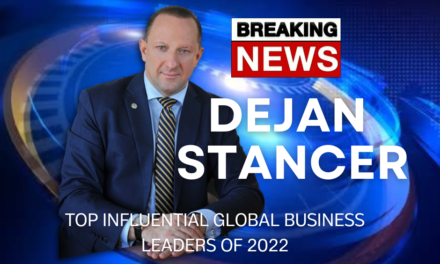by Theresa Ashby
Great business leaders understand that leading an enterprise in the direction of continuous growth once it has caught fire can take a herculean effort. Inevitably, every organization—from startups to the well-established—faces the tenuous transition point where it must be willing to untangle from deeply embedded routines and consistently make core decisions that result in increased employee engagement, loyalty, and a shared vision.
Yet countless entrepreneurs and executives at the C-level simply lose focus. Drawn into the distractions of day-to-day minutiae or succumbing to perfectionism, they all too often become mired in trivial decision-making, which steals their valuable time and spirits away from their innovative genius.
It’s no secret that many of today’s business leaders are searching for clarity, creativity, and direction. Most are so busy working in their businesses that they neglect to work on their businesses in strategically meaningful ways that drive greater levels of success.
Strategic Leadership
A successful strategic leader can influence others to execute on short-term and long-term goals by being focused and clear on the direction of the organization—creating an enduring organization no matter what is happening in the environment. It requires the leader to take a 50,000-foot view, consulting the right people, gathering and sorting through the most important information, and then making connections that align with the strategy.
Understanding that strategy guides every aspect of a business, a strong leader has the unique capacity to define opportunities and risks and determine where to invest resources. By taking tactical steps required to move the strategy forward in line with profit centers, a strategic leader is able to build the most value in an organization and develop targeted plans that align people, systems, and financial resources to ensure that strategy is properly executed and driving the right performance or what I call “Real Work.”
Strategic Failure
Fear of failure is born of failure, but it’s inevitable… in business and life. What separates great strategic leaders from fear, however, is their willingness and ability to take reasonable risks, improve upon processes when mistakes occur, and courageously forge ahead.
Some organizations such as the Bill & Melinda Gates Foundation and the UK-based innovation charity, Nesta, have held “failure fests” where employees who review and learn from past failures accept them as integral not only to organizational success but also to their development. The alternative, they concur, is to remain paralyzed by fear and accept our minds’ illusions. The ensuing domino effects often include:
• Obvious absence of strategic leaders
• The dearth of critical thinkers
• Lack of communication and collaboration skills
• Nonexistent vision and objectives
• Insufficient capital and other resources
• Poor speed of growth
• Inadequate competitive advantages
• Evident internal strife
• Innovation paralysis
Navigating Organizational Complexity
Because today’s organizations have undeniably become increasingly ambiguous and chaotic, business leaders must strategically observe complexity as a whole—examining both the external environment and internal landscape—to make the “best” decisions with the data available and within a reasonable time frame.
This requires full engagement in balancing direction and autonomy of implementation of long- and short-term goals as well as the execution of the tactical work. It also requires a resolve to unite the organization under a shared purpose, which is perhaps one of the greatest challenges a business leader will face.
The Strategic Leadership Essentials
With a sharp focus on the big picture, as well as strategic communication and collaboration skills to build more effective teams, leaders who contemplate, plan, take action and use influence initiate real change and exponentially improve an organization’s performance while on the road to long-term success.
Contemplate. Daily, set aside time to engage in critical thinking and review your top three priorities. Talk with your thought partners or employ mindfulness techniques that enable you to step back and evaluate, as objectively as possible, what’s being done and whether or not it’s working. Strategic questions for careful consideration and confirmation are as follows:
• Who are we as an organization?
• What are we trying to accomplish?
• What problem or problems do we solve?
· How are we going to get it done?
· How do we reach our customers?
• Who else is doing this?
· What market research have we done?
• Do we truly modify the way business is being done in our industry?
• Are these targeted customer relationships profitable?
• What do we need to accomplish our goals?
• When are we profitable?
Plan. Continuously evaluate your strategic focus: identify and define where to spend time, your leadership team’s skills and talents, and allocation of resources. With the
continuous review, you’ll be able to differentiate between actions that align with the overall big-picture strategy and those that require more fine-tuning or elimination.
Action.
Execute daily activities and look for opportunities that are focused and driven by your strategy. Build and expand personal knowledge and develop others. Do everything with purpose and continuously analyze actions, concentrating on those that best serve your organization’s overall goals.
Influence. Show up with the presence of a strategic leader who drives for results while respecting others’ thoughts, opinions, and work. Take an unbiased look at how you are perceived, how effective you are in assisting, empowering, and enabling your team, and above all, how your leadership inspires positive engagement, collaboration, and bold new ideas.
Strategic Leadership Capacity
Coaching a team of collegiate or professional athletes is no different from leading an organization, and if sports have only one lesson to impart, it is this: alignment is essential for overall success. Like a winning team, the job of strategy is not limited to a few top executives.
Strategic leaders are needed throughout the network of a complex organizational ecosystem to sustain a competitive advantage. By empowering a high-potential leader with the skills necessary to successfully navigate the unknown, an entire organization will be positioned to face setbacks with intelligence, courage, and resolve and move forward into a dynamic future.
Strategic execution will be successful as long as strong, strategic leaders are placed squarely at the helm and tactical implementers are on the forefront of the real work.
True leaders draw from experience—whether transformative or catastrophic—and incorporate lessons learned to improve their way of thinking, behaving, and leading. Those who have developed a sharp eye for opportunities before competitors see them, anticipate change and prepare their teams for the shifting tides, and stand confidently poised to achieve mission-critical goals and objectives that matter most will lead their companies into a profitable future.
You as the Strategic Leader
Each of you are an integral part of leading a business and no matter if you focus on being a strategic leader or not—it will focus on you—and business will either grow or die. Businesses are what drives the economy, successful business grows the economy, and strategic leaders help define the economy. Ask yourself, “are you a strategic leader, or a leader who is constantly working on perfecting the strategy?” If you are later, realize you have the strategy in the form it is in, begins to execute, be flexible, and set objectives. And for everyone, build a team of strategy experts and tactical implementers, and business will grow.
As the CEO of Strategic Implementation Solutions, I understand the difficulty of being a strategic leader as I have run multi-million-dollar projects that required a great deal of contemplation, planning, taking action, and driving outcomes through influence. Now I am dedicated to serving my client’s helping them drive their growth imperatives through focusing on People, Process, Profit, and Productivity so they have Peace of mind. ~ Theresa Ashby
If you would like to talk further about your organization, I am always open to hearing your thoughts. Please contact me at
info@StrategicImplementationSolutions.com
FB: Theresa Ashby LinkedIn: Theresa Ashby
Dr. Theresa Ashby is known as a Strategist. She is recognized as a savvy, provocative and genuine individual and is widely respected for her business acumen. Theresa is a national business and success consultant, advisor, speaker, and author who is passionate about driving businesses forward, as this is the only thing she believes helps grow the economy on all levels. Her ability to lead and develop people and to unite teams around a common vision has been paramount to her success throughout her career. Theresa impacts an organization through the delivery of groundbreaking operational implementation strategies, processes, and advisement. Her background includes thirty years of experience in a variety of leadership roles, managing a $50 million budget, overseeing $1.7 billion of capital improvements, running hundreds of teams at one time, implementing operational strategies, and serving as VP of operations for a leading healthcare organization. She currently is the CEO of Strategic Implementation Solutions, serviced as Vice President for the National Association of Women Business Owners-California, holds a seat on a corporate board, is an Assistant Professor at Loma Linda University, and enjoys traveling the world. And an author of the book: Better Implementation Now! Eight Ways Great Strategies Fail and How to Fix Them. http://strategicimplementationsolutions.com/




